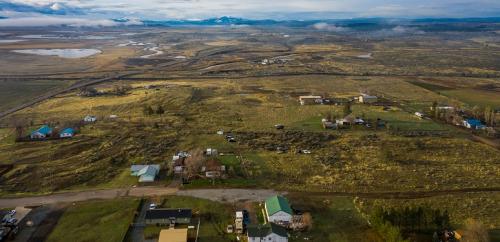By Michael Powell
NCTA President & CEO
Now that we have had a few days to reflect on the President's infrastructure plan, we want to be clear about how we view it. We share the end goal of the Biden broadband proposal: ensuring that 100% of Americans have access to robust broadband networks. However, such a monumental plan must be properly targeted to achieve our principal national objectives—getting broadband networks built in areas where they don't exist, and modernizing a safety net to help low-income families adopt and afford internet service.
Here is what we strongly support.
1. Dedicate all the funding to communities with no broadband service or areas that won't get built without government help.
There have been countless programs over the decades dedicated to closing the digital divide, particularly in rural communities. Yet many of those communities are still waiting for service. Why? One big reason is lack of oversight about how the funds were actually used. Past programs have often failed to put up adequate guardrails that direct funding where it is most needed and, naturally, when that happens the money is diverted from where it is needed most and ends up going to build in markets that are more lucrative—where the costs of deploying are cheaper and the number of paying customers greater. The result is that the money gets wasted on building networks in areas where consumers already have access to broadband thereby leaving unserved communities still waiting. When a high dollar program like this one is proposed, there is temptation to think there is enough cash to do any and everything without making hard choices. Such a lack of discipline is what often leaves unserved communities without a chair when the music stops and the money runs out.
2. Allow every technology that can deliver broadband to unserved communities to compete for federal funding.
Any network that can evolve to meet consumer needs should be in the game. Broadband networks come in all varieties—hybrid fiber coaxial networks, mobile and fixed wireless, fiber and satellite. Each of these technologies have different characteristics and some are much better suited to reach the challenging geography and low population density in many rural areas. Instead of creating a new 'tech mandate' that insists on a single technology—many mistakenly fixate on fiber to the home as the only way to "future proof" the network—the government should allow a portfolio of proven technology platforms to compete.
3. Don't stack the deck against fair competition for federal funding.
There are many different players positioned to own, build and operate broadband networks and they should all be given an equal opportunity to compete. The White House plan places a priority on government and non-profit networks to receive public funding. We realize that rural co-ops or local governments may be the best solution in some unserved communities, but the government shouldn't irrationally favor one solution over others. The privately funded broadband industry has achieved spectacular results over the last decade and most notably met the enormous challenge of the pandemic, keeping Americans working from home, learning remotely, and using telehealth to stay safe. Any major broadband infrastructure plan should not ignore already deployed and robust broadband networks but instead should look to the private sector as an experienced and collaborative partner and part of the comprehensive solution to closing the digital divide quickly.
4. Ensure networks are future proofed by establishing speed benchmarks that meet consumer needs and demand.
The cable industry offers the fastest internet service to consumers more widely than any other, with 1 gigabit speeds available to 80% of all U.S. homes. These speeds are real today and have increased significantly in recent years in response to consumer demand. The expressed preference by some for a symmetrical speed requirement (100 Mbps downstream and 100 Mbps upstream) is fundamentally inferior because that doesn't reflect actual consumer usage of the internet, which has been wildly asymmetrical. Insisting that providers dedicate resources to such a standard sacrifices much more ambitious targets like multi-gigabit networks where downstream and upstream speeds are right sized to real world uses.
5. Deliver subsidies to low-income families to help pay the monthly cost of broadband service.
In the heat of the COVID national emergency, Congress began to see the wisdom of helping low-income Americans afford broadband by providing subsidies to consumers. This is a smart and targeted way to get support quickly to the people who need it most. The Biden Plan rejects further subsidies and instead floats the ambiguous idea of having the government regulate broadband rates. This approach is misguided. Low-income citizens need subsidized broadband rates that are lower than any reasonable price that would result from a drawn-out government rate regulating process. Such a process would be a thorny, lengthy morass of complexity that would drag on for years at regulatory agencies and through the courts, further delaying the help that is needed.
The cable industry has been a good citizen, a leader in broadband network innovation and a reliable infrastructure that stood up strong during the pandemic. We have been at the forefront of efforts to increase broadband opportunity—in terms of both access and adoption—and are ready to support a new broadband expansion plan that is well-crafted and will connect unserved areas and provide financial assistance to low-income and minority communities. Billions of dollars are a big factor in this equation, but wise policies and carefully crafted details will make the difference between a watershed moment, and a flood of waste, failure and regret.
